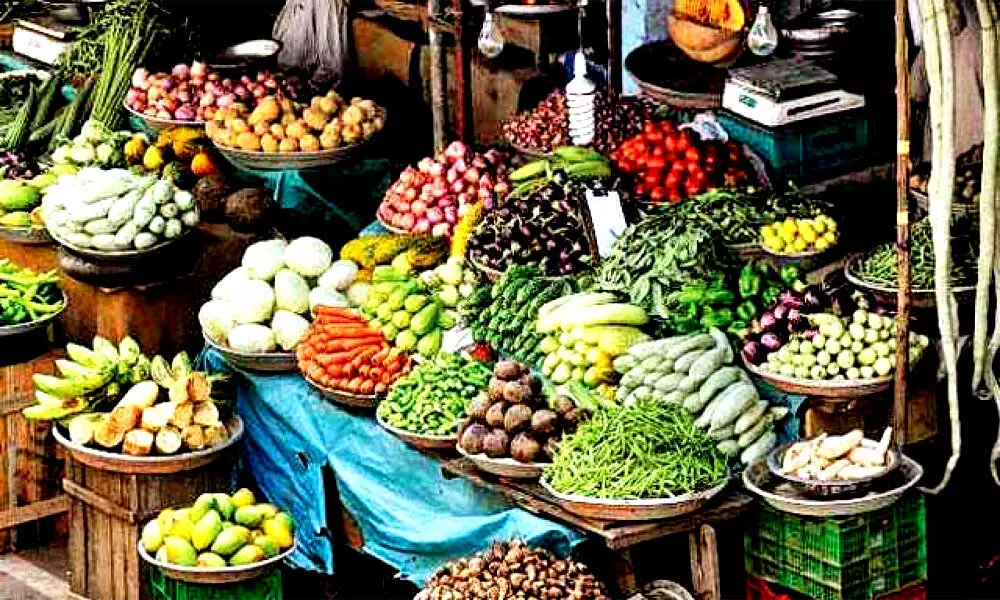Wholesale inflation hits 5-month high
Rises to 12.54% on higher prices of manufactured products, crude petroleum
image for illustrative purpose

Passing on Higher Input Costs
- Previous high was 13.11% in May
- Rise in prices of mineral oils, basic metals, food products, crude petroleum & natural gas, chemicals and chemical products, contributing to WPI
- Crude petroleum inflation was 80.57%
- Manufacturers increasing their output prices
With demand reviving, we expect producers to start passing through higher input and freight costs, even as the tax cuts on fuels will offer them a breather. Led by the base effect, we expect WPI inflation to moderate in the months ahead -Aditi Nayar, chief economist at ICRA
Mumbai: The wholesale price-based inflation zoomed to a five-month high of 12.54 per cent in October, mainly due to rise in prices of manufactured products and crude petroleum. WPI inflation has remained in double digit for the seventh consecutive month beginning April. Inflation in September this year was at 10.66 per cent, while in October 2020 it was at 1.31 per cent. The October WPI is the highest in five months since May, when it was at 13.11 per cent.
"The high rate of inflation in October 2021 is primarily due to rise in prices of mineral oils, basic metals, food products, crude petroleum & natural gas, chemicals and chemical products, etc., as compared to the corresponding month of the previous year," the Commerce and Industry Ministry said.
Inflation in manufactured items was higher at 12.04 per cent in October, as against 11.41 per cent in the previous month. In the fuel and power basket, the rate of price rise was 37.18 per cent in October, as against 24.81 per cent in September. Crude petroleum inflation was 80.57 per cent during the month under review, as against 71.86 per cent in September. Inflation in food articles too witnessed some uptick on a month-on-month basis at (-) 1.69 per cent in October, against (-) 4.69 per cent in September. Vegetable prices were lower at (-) 18.49 per cent, while in onions it was (-) 25.01 per cent.
Analysts believe that while the RBI is likely to start tighteningsoon, this may not materially impact near-future market interestrates.
"The 5 per cent month-on-month surge in food prices in October wasdriven by vegetables and fruit. The early data for November suggests acontinuation of the rise in prices of vegetables such as potatoes,tomatoes and onions, which will weigh against a seasonal moderation inthe food index in the current month," says Aditi Nayar, chiefeconomist, ICRA.
The core index recorded a month-on-month jump of 1.0 per cent, with awidespread uptick across the sub-groups reflecting the pervasivecommodity price pressures, pushing up the YoY inflation to a fresh alltime high of 11.9 per cent in October.
Only three of the sub-groups ofnon-food manufactured products recorded a flat or declining MoM trendin October.
India Ratings and Research Principal Economist Sunil K Sinha said core and manufacturing inflation surged to a fresh high of 11.8 per cent and 12 per cent respectively in October 2021. This was the fourth successive month in which they have remained in excess of 11 per cent. "As supply disruption has yet to normalize in many areas and manufacturers are becoming more confident about the demand recovery they are increasingly passing on the higher input costs to their output prices. Since fuel is a major input into transportation cost, higher fuel prices push up the distribution cost further," he said.
CRCL LLP, CEO and Managing Partner, D R E Reddy said the rise in the WPI is a cause of concern as the industries may pass it on to end consumers. "The persistent rise in inflation points to a rise in demand. On the positive side, the rise in demand points to a recovery in growth as lockdown is eased across the country. The month-on-month rise may hasten RBI's decision to unwind the excess liquidity, tighten the policy rates earlier than expected," Reddy added. Data released last week showed, retail inflation-based on Consumer Price Index rose to 4.48 per cent in October, from 4.35 per cent a month ago, as food prices inched up along with high input costs, fuel and commodity prices.
Policy rate ambivalence: With the September IIP lower, and Octoberretail inflation higher than expected, the RBI is likely to face adilemma in raising rates. While the RBI is likely to start tighteningsoon, this may not materially impact near-future market interestrates.

